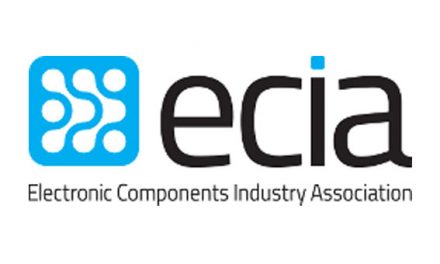Industry 4.0: Are We There Yet?
Will the drive for supply chain resilience lead to a faster adoption of Industry 4.0. We asked Suraj Patil, Aranca, and Michael Ford, Aegis for help in sorting it.
EMSNOW: You both have expertise in smart manufacturing/industry 4.0 — this is something that the electronics manufacturing sector has been hearing about for 10 years. COVID-19 has accelerated some implementations, but for the most part, the EMS industry is a very low margin business, and they are saying, ‘show me the money’ to the software vendors. What implementations are you seeing and how can companies justify the ROI?

Suraj Patil
Suraj: Manufacturing cost economics is greatly impacted by machine downtime and resource utilization. Application areas such as connected machinery with predictive maintenance can help in understanding the ROI and benefits of smart technology easily. Another area includes automated optical inspection and testing, where several industry cases have proven its suitability, benefits, and ROI, particularly in electronics manufacturing.
High mix low volume production setups in the EMS industry will benefit more from smart manufacturing technologies as these facilitate agility, visibility, and adaptiveness.

Michael Ford
Michael: I have never come across any manufacturing company that would position itself as a “high-margin” operation. Consider though, the volume of manufacturing in the EMS industry, including the value of materials. Low margins actually represent potentially significant investment, evidenced by the continuous churn of utilization of the latest machines and assembly technologies. The real challenge to EMS companies is risk, whether of increasing labor costs, loss of reputation or supply-chain issues. When quoting for work, EMS companies obviously will include all of the costs relating to the scale of each opportunity. We see many EMS companies working with small lots, with asset utilization as low as 10% to 30%, but are able to retain their profitability. When investing in manufacturing locations, machines, materials etc., EMS companies adopt a huge amount of skill built up over many years of experience, in order to know which locations, machines and business opportunities to go for, that will deliver the expected outcome. There is no risk with buying for example a new machine, as it comes with complete specifications and defined capabilities. The machine operator in the mix is very much a known and manageable part of the investment. The same cannot be said for software, which is a mixture of being a tool and a solution, the benefits of which are very much dependent on the way in which it is implemented and used on a daily basis. The risk involved for investment in Smart manufacturing, Industry 4.0 software is at least one order of magnitude higher than the purchase of any other item for the average EMS company. Software is a rapidly evolving area of the industry, mistakes can be costly. Understanding how to purchase software is difficult, as it is in reality sold as a commodity by the largest companies in the industry, without due consideration for long-term usability and costs of ownership. Too many times, fingers have been burned. Companies in the software industry that are leaders of technology creation for customer value, interoperability of solutions that drive long-term sustained customer benefit, can be seen as a good start to engage with, together with a strong program that promotes engineers within the manufacturing operation who understand the true value and potential that software provides, over and above the automation of what is already there, which is often an obsolete practice.
EMSNOW: How have the recent supply chain SNAFUs impacted companies’ plans for digitalization?
Suraj: On the digitization front, supply chain disruptions highlighted the importance of the capabilities created by digital initiatives such as remote monitoring and control. Connected machines and smart glasses-based solutions helped organizations continue with their routine activities such as inspection, auditing, and maintenance assistance remotely even during travel restrictions and lockdowns. Supply chain disruption in a way helped many organizations understand and unlock the true potential of these technologies. This would help drive the adoption of smart technologies and make it a priority agenda for strategic managers.
This would also drive another innovative model such as factory-in-a-box. A factory-in-a-box is a modular, mobile, and rapidly deployable production unit powered by industrial digital technologies. It could help manufacturers take the shortest route to market or shift production facility or reconfigure supply chain due to any disruptive event. Three key features of factory-in-a-box – flexibility, mobility, and speed – make it an ideal solution for generating on-demand production capacity to balance the supply chain.
Michael: The impact has been very positive indeed. Recent challenges have very much highlighted the need to be in control and have accurate and immediate visibility of the production status, progress, and most of all, materials. There have been so many cases where companies have had to cut-short production lots, where ERP had said that there were enough materials for the lot, only to find that physically, that was not the case, as spoilage and attrition had progressively accumulated inventory quantity and location inaccuracies. Ironically, other production lots could have been completed, were it known how many physical materials there actually were. The supply-chain is only as strong as the final link with production itself. ERP and MES need to work far more closely together, connected more seamlessly, both contributing different aspects in the roles of planning and material management. Here is where the strength of plans for the next generation of digitalization are coming for many in the industry.
EMSNOW: Where do you see the most value in digitalization for manufacturers: internally to the manufacturer, cross-enterprise connectivity, marketing, or….?
Suraj: Initially, machine- and process-level connected solutions and remote monitoring capability can directly help in realizing the benefits of the technology such as reduction in downtime, reduction in defects, improvement in quality, and remote control.
Furthermore, cross-enterprise connectivity would help in optimizing overall production and business operations. It would be driven by advance data analytics and AI algorithms. Improved visibility would help organizations strengthen backward integration and have better control over the entire supply chain.
Michael: Shop-floor digitalization has to primarily create benefit on the shop-floor itself, such that each instance of investment, whether in hardware, software or the cost of establishing new best production practices, brings individual ROIs. Putting these together, for example through interoperability across an IIoT-based MES platform, connectivity enhances other aspects of the operation through accuracy and visibility of data, for execution, quotations, asset utilization, quality, material waste, and much more. Going forward, simple things from the modern MES will contribute massively to help address manufacturing’s latest threats and risks. For example. the association by MES of the traceability and relationship between the exact use of materials and each product made, is a crucial aspect of finding products potentially affected by a cybersecurity incident, a counterfeit material etc,. helping reduce costs, risks and protecting brand perception
EMSNOW: Is the ‘China plus one’ strategy going to have an impact on the rate of digitalization for manufacturers? Are companies going to be distracted by the need to shorten and simplify their supply chains to address the challenges of doing business in China?
Suraj: Supply chain disruptions during COVID-19 highlighted the risk of concentration. Organizations have understood the importance of diversification to mitigate such risks in future. Most organizations are taking some big initiatives to shift supply chain from China to other emerging economies in Asia, such as India and Vietnam; this has led to the emergence of the ‘China plus one’ strategy.
A recent survey indicated that more than 40% companies are considering Vietnam in their top buying regions for 2021. India has been part of the US supply chain hub due to its IT sector; also, demand for sourcing from India is increasing post-pandemic. Considering the obvious opportunity, both governments are trying to leverage this by modifying FDI regulations and improving the ease of doing business for foreign multinational companies.
Michael: It is too easy to play down the abilities of China and other Asian companies to embrace technology and digitalization. Any large scale change, especially including new facilities, being designed for less dependence on labor, and the need for remote communication, will drive the adoption of digitalization, unencumbered by legacy practices. It will go in as standard in many cases, including from both global and local suppliers.
EMSNOW: Which end-market segments do you see implementing smart manufacturing measures more quickly?
Suraj: As explained earlier, application areas such as connected machinery with predictive maintenance will likely see faster adoption across end industries. Another area includes automated optical inspection and testing, where several industry cases have proven its suitability, benefits, and ROI, particularly in electronics manufacturing.
Michael: The major issue of “Smart vs. Secure” will decide this. As more information is created and shared within manufacturing, the more that risk of its targeting and use by bad actors increases, just as any good-intentioned post on social media can attract unexpected responses. Beyond traditional IT security, a new method of interoperability and co-operation, without the need to disclose Intellectual Property, such as the exchange of Verifiable Credentials instead of traceability data, is needed to drive Smart manufacturing adoption in safety-critical applications such as military, aerospace, e-Mobility, medical etc., which are the sectors that have the most to benefit from Smart manufacturing, though it has to be said that every manufacturer potentially faces the same challenges, and opportunities.













